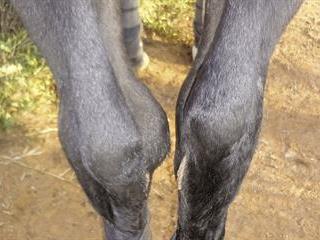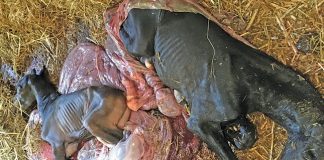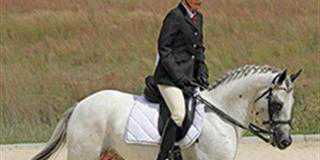
I love watching a beautifully schooled horse move across a dressage arena, or a happy endurance horse crossing a finishing line with a lightness in its step. What I do not love, is seeing a horse in pain.
One cause of discomfort in horses is osteochondritis dissecans (OD). It is thought that OD is caused by a malfunction of endochondral ossification, which results in a disturbance in the production of cartilage and the bone supporting it. The cartilage and subchondral bone are not evenly laid down and weaker than areas that have developed normally. When the animal moves, the pressure placed on the poorly developed sections damages the normally developed tissue.
Imagine a wall. The foundation is the bone and the first row of bricks and cement is the cartilage. Imagine parts of the foundation are crumbling and some of the bricks are of different sizes. It’s nearly impossible for the wall to be strong. When the wall is put under stress (by, say, the roof) bits of brick and cement will break away.
When the horse moves there is local detachment and fracture of cartilage and bone, forming an OD fragment. These detached areas can exist as loose flaps of tissue. If they become completely detached, they become ‘floating islands’ that travel throughout the joint.
These loose flaps and floating islands of abnormal cartilage and bone act like bumper cars, causing terrible inflammation. Not only is this painful, but it will likely result in lameness. If you are aware of the causes and risk factors for OD, then you stand a very good chance of avoiding having to ever face the disease.
Causes of OD
There are a number of causes that can work together to trigger the onset of the disease:
- Rapid growth and large body size: An unusually rapid phase of growth can lead to OD.
- Nutrition: Diets very high in energy or with an imbalance of trace minerals can lead to OD, as can general under-nutrition. Horses need very little concentrate when growing. Hay is best.
- Hormonal imbalances: An imbalance in certain hormones during development, including insulin and thyroid hormones.
- Trauma and exercise: Trauma to a joint, including during routine exercise, is often involved in the formation and loosening of the OD flap. Horses need to be started very gradually.
All of these factors can be involved in a complex series of interactions, making it impossible to predict which horses will develop OD. It is thus difficult to prevent the formation of OD in individual animals.
Symptoms and treatment
OD can be detected in foals as young as four months old, or as late as skeletal maturity (about three years of age). In adult horses, signs may reappear at any stage. The most common sign is effusion within the affected joint, often first noticed shortly after the horse begins formal training and exercise.
Depending on the location and severity of OD, the horse may be noticeably lame, may only be lame during high-speed work, or may not have any detectable lameness, but shows a reduction in performance. This is then very often only picked up by an experienced rider.
Treatment depends on the size of the flap or fragment. Often rest and anti-inflammatories will do the trick. Medium-to-large OD fragmentation is best treated with surgery. Prognosis following treatment is now very good for many competitive horses.
With shows becoming very competitive, it’s easy to get caught up in the need for a bigger, better horse, but this could lead to serious problems. Allowing horses to grow at a healthy, normal rate is best. Don’t be tempted to push protein into young horses. Keep them on a balanced ration and good quality grass.
Kim Dyson breeds Arabians and Lusitanos, and has 22 years’ experience in holistic equine and human body work.













